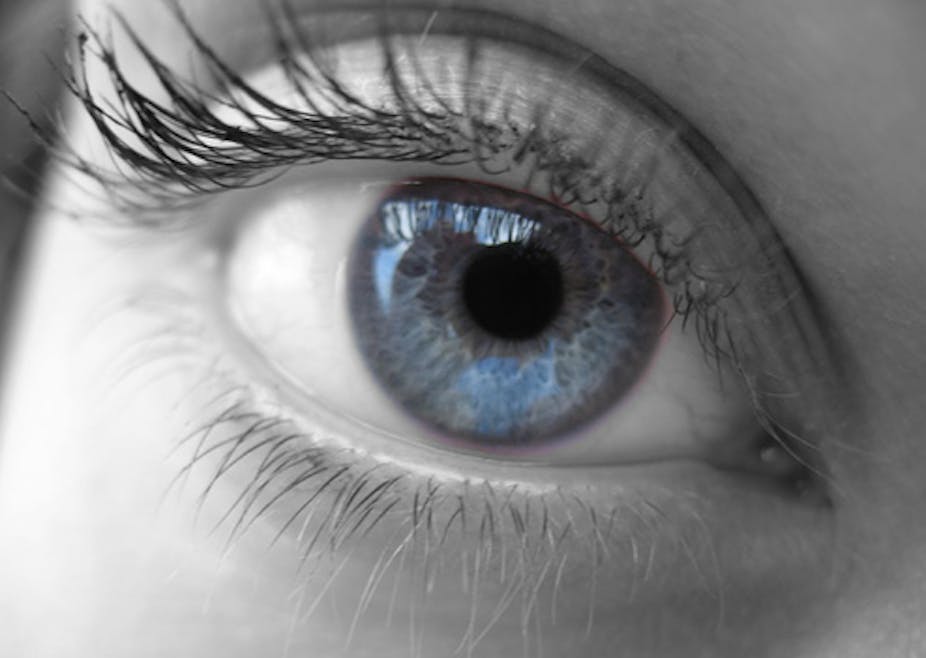Patients with certain diseases of the eye can have their sight improved with a corneal transplant. But as with many organs, there are not enough corneas available for transplantation and this is partly because of the relatively high rate of refusal to donate.
A 2010 survey of Australian adults found that 40% of individuals were unwilling to donate their eyes when they die. Indeed, around a third of families who agree to heart and kidney donation specifically refuse eye donation.
Eye transplantation conjures up the idea of removing an entire eyeball and replacing it with another, but the reality is slightly less miraculous. Indeed, the process is more accurately called corneal transplantation. The cornea is the thin transparent tissue that forms the front window of the eye, and it can be successfully transplanted to improve vision for people suffering a number of different conditions.
Despite the relative unwillingness to donate eyes, last year 1,289 Australians become corneal donors - almost four times the 337 Australians who donated other organs. This is because it’s easier to donate corneas as opposed to other organs given that they can survive for up to 24 hours after the heart has stopped beating (they don’t directly rely on a blood supply).
In contrast, other organs such as kidneys and hearts, can only be donated if an individual dies in a highly controlled environment like an intensive care unit. So while the percentage of individuals who consent to corneal donation may be lower, more individuals are able to donate corneas than other organs. And everyone who does donate, gives two corneas.
Not forthcoming
One aspect of the reluctance to donate eyes relates to their role in society more generally. The internal organs are known to the world only by their function or by metaphor. The eyes, on the other hand, are seen virtually every time we come into physical contact with another person. Making eye contact during conversation is not only polite in Western culture, it also has implications for assessing the veracity of what someone is saying and even the personal characteristics of the speaker.
More generally, it’s thought that intelligence, enthusiasm, and all manner of emotions can be understood by looking into someone’s eyes. This idea is captured in the saying the eyes are the windows to the soul.
Our language, cultural narratives, literature, philosophy, and faith traditions are all strongly infused with references to eyes and vision. Shakespeare heavily utilises visual metaphor in King Lear, for instance, and Sophocles’ play Oedipus Rex revolves around what it means to see.
Ancient Greek philosophical truth is linguistically tied with having seen (eidenai). And in modern English seeing is synonymous with understanding.
Difficult decisions
For all of these reasons, and because the question of eye donation is posed in the context of grief and recent death, people struggle with the decision about whether to donate their loved one’s eyes. Indeed, removing the eyes may be thought of as fracturing the relationship between the decision makers and the deceased. And to contemplate removing the eyes is to contemplate agreeing to an act that may be thought of as disfiguring.
While consenting to donation under these circumstance is often difficult, the special cultural place for vision and eyes means that there’s a stronger imperative to enable sight to be restored to someone who is visually impaired. And there’s evidence that while some people are uncomfortable about donating eyes, others feel that this is a particularly important type of donation to agree to.
So if you have some concerns about eye donation, know that you’re not alone. It’s a difficult decision, but balanced against it is the knowledge that you could restore the sight of two people. While most of us are unlikely to be in the position of having to make any decision about organ donation, know that it’s four times more likely that you will be asked for corneal donation than other organs.
And if you’d like to donate your organs when your time is up, remember that the best chance you have of helping someone is for you and your family to agree to donate your eyes.

